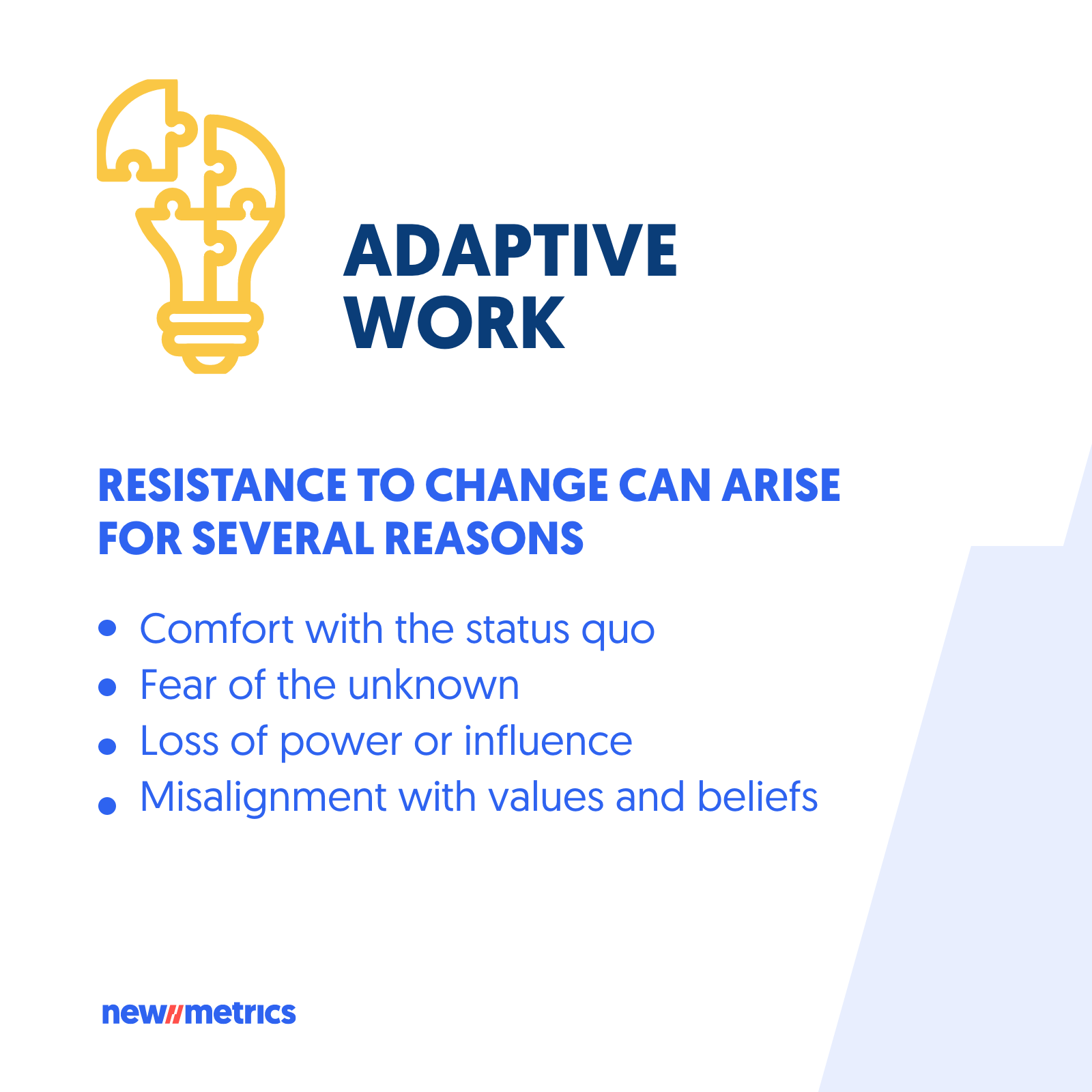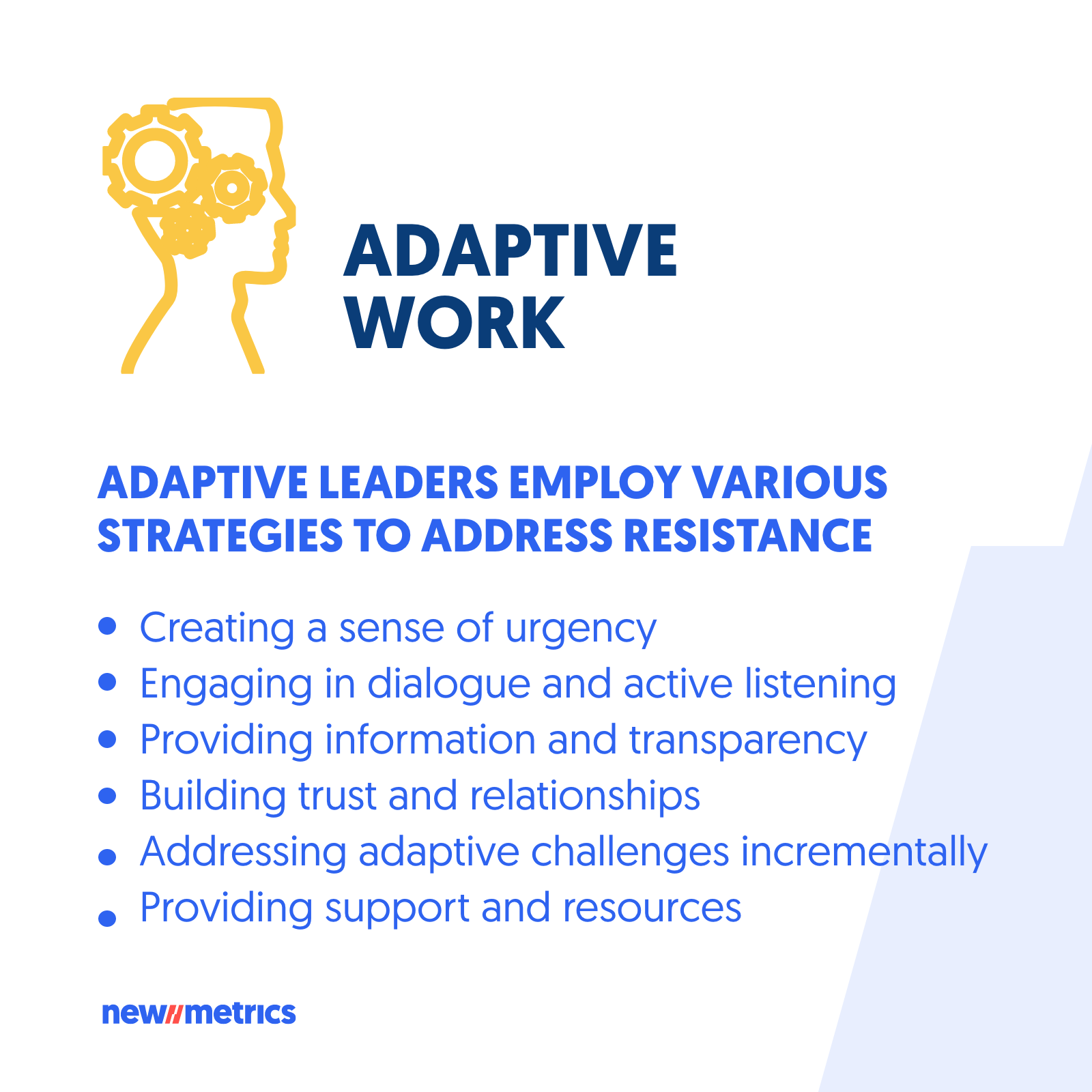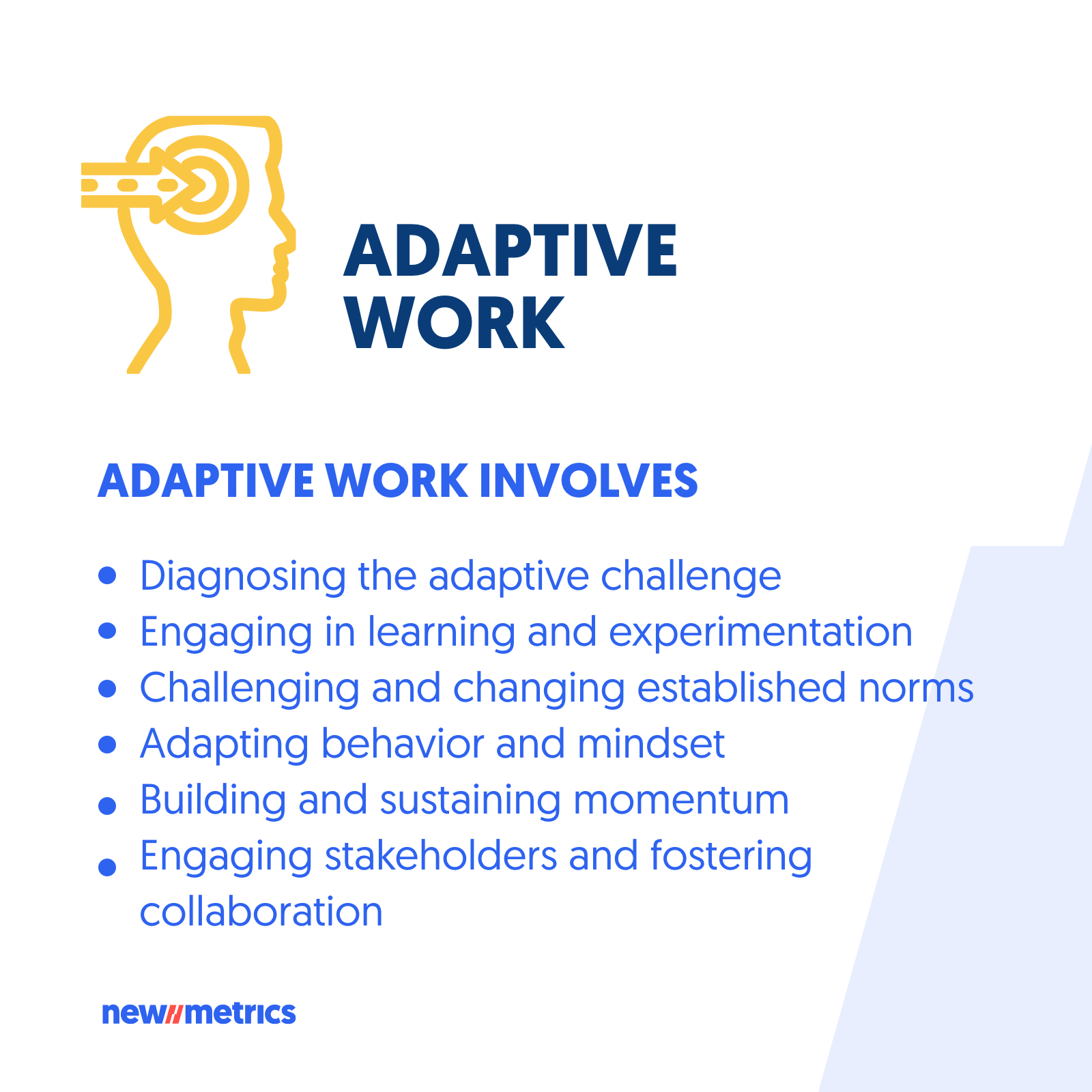
Adaptive Leadership: Navigating a VUCA World
In today’s rapidly changing and unpredictable world, traditional leadership approaches often need to address the complex challenges individuals, organizations, and societies face more effectively. The acronym VUCA, Volatility, Uncertainty, Complexity, and Ambiguity, has become a popular descriptor for the current state of affairs. In such a VUCA world, leaders must adopt a different mindset and skill set to navigate the turbulent waters and lead their teams toward success.
This is where adaptive leadership comes into play. Adaptive leadership is a concept that acknowledges the need for leaders to adapt and thrive in the face of VUCA challenges. It goes beyond the traditional notion of leadership as a hierarchical position. It emphasizes mobilizing individuals and organizations to tackle adaptive challenges that require learning, innovation, and systemic change.
The Five Dimensions of Adaptive Leadership
In a VUCA world, adaptive leadership becomes essential as it enables leaders to navigate the unpredictable and ambiguous landscape by fostering resilience, agility, and the capacity to embrace change. It encourages leaders to be proactive, innovative, and comfortable with ambiguity. Adaptive leaders are skilled at diagnosing the underlying causes of complex challenges, mobilizing people and facilitating the necessary adaptive changes.
Moreover, adaptive leadership recognizes that change is not a linear process with a predetermined endpoint. It requires ongoing learning, experimentation, and adaptation. Leaders must be willing to challenge their assumptions, embrace feedback, and iterate their approaches as they navigate the complexities of a VUCA world. This requires high self-awareness, humility, and a growth mindset.
Adaptive Leadership has 5 main dimensions:
- Emotional intelligence: Adaptive leaders can demonstrate emotional intelligence by being aware of their own emotions and the emotions of others. They can use this awareness to build strong relationships with their teams and other stakeholders. For example, they can listen actively to their team members and respond with empathy and understanding.
- Organizational justice: Adaptive leaders can demonstrate organizational justice by creating a culture of fairness and equity within their organizations. They can do this by treating all team members with respect and dignity and ensuring everyone has an equal opportunity to succeed. For example, they can establish clear performance metrics and reward systems that are transparent and equitable.
- Organizational knowledge creation: Adaptive leaders can generate new knowledge within their organizations by converting the difficult-to-express tacit knowledge into formalized explicit knowledge and vice versa. This process encompasses four activities: socialization (sharing tacit knowledge through experience and observation), externalization (expressing tacit knowledge into explicit concepts), combination (merging different explicit knowledge to form new knowledge), and internalization (embedding explicit knowledge into tacit knowledge through practical learning). The practice benefits organizations by fostering innovation, allowing them to develop new products, improve existing ones, and adapt to changing markets. Moreover, it cultivates a culture of learning and innovation, promoting higher employee engagement and satisfaction.
- Development: Adaptive leaders can demonstrate a commitment to development by investing in the skills and abilities of their teams. They can do this by providing training and development opportunities, coaching, and mentoring. For example, they can encourage team members to take on new challenges and responsibilities to help them grow and develop.
- Character: Adaptive leaders can demonstrate strong character by leading by example and demonstrating integrity, honesty, and accountability. They can do this by being transparent in their decision-making processes and taking responsibility for their actions. For example, they can admit when they have made a mistake and work to correct it.
Adaptive Leadership Framework
Adaptive leadership is rooted in the work of Ronald Heifetz and his colleagues, who developed a framework to help leaders address complex problems that still need to have ready-made solutions. In this model, leadership is not limited to those holding formal authority but instead distributed throughout an organization or community.
Situational Challenges
Situational challenges refer to the specific issues or circumstances that require adaptive leadership. These challenges are characterized by their complexity, uncertainty, and the need for innovative solutions. Situational challenges often arise when there is a gap between the current reality and the desired outcomes or when traditional approaches and solutions are no longer effective.
Adaptive leadership recognizes that adaptive challenges, which involve changes in values, attitudes, behaviors, and norms, require a different approach than technical challenges with known solutions. Here are some ways leaders can distinguish between the two:
- Nature of the problem: Technical challenges are typically well-defined and can be addressed using existing knowledge, expertise, and established procedures. They often have clear solutions that can be implemented through technical know-how. In contrast, adaptive challenges are complex and require deeper exploration and adaptive responses. They involve shifting attitudes, behaviors, and mindsets, and the solutions are not readily apparent.
- Familiarity and expertise: Technical challenges are usually within the leader’s and organization’s expertise and experience. They may have been encountered before, and there are established best practices and known solutions. Adaptive challenges, on the other hand, are often unfamiliar and require learning and experimentation. They may require seeking external perspectives, engaging stakeholders, and challenging existing assumptions.
- Need for innovation and learning: Technical challenges can be resolved by applying existing knowledge and solutions. They require problem-solving skills and expertise. Adaptive challenges, however, demand innovative thinking and learning. They involve questioning assumptions, exploring new possibilities, and experimenting with different approaches. Leaders must foster a continuous learning culture and encourage experimentation to address adaptive challenges.
- Level of resistance and conflict: Technical challenges typically generate little organizational resistance or conflict. They are often seen as routine problems that can be solved with technical expertise. Adaptive challenges, on the other hand, frequently encounter resistance and conflict. They require addressing underlying values, beliefs, and power dynamics. Leaders must navigate this resistance and create a safe space for open dialogue and collaboration to address adaptive challenges effectively.
- Duration and recurrence: Technical challenges are temporary and isolated. Once a solution is implemented, the problem is resolved. Adaptive challenges, on the other hand, are long-lasting and may require ongoing attention. They may reoccur in different forms, requiring leaders to adapt and respond to changing circumstances continually.
By considering these factors, leaders can differentiate between technical and adaptive challenges within situational challenges. This distinction helps leaders determine the appropriate strategies and approaches to address each type of challenge effectively.
How do adaptive challenges manifest?
- Changing external environment: Situations where the external landscape undergoes significant shifts, such as market disruptions, technological advancements, or regulatory changes, can pose challenges that require adaptive responses. Leaders must navigate these changes and help their organizations adapt to new conditions.
- Internal organizational dynamics: Situations that require adaptive leadership can include conflicts, resistance to change, competing priorities, or a lack of alignment among different teams or departments. Adaptive leaders need to address these internal challenges, foster collaboration, and create a shared sense of purpose to drive positive change.
- Cultural and systemic issues: Challenges related to the organizational culture, values, and underlying systemic issues may require adaptive leadership. These challenges often involve deeply ingrained beliefs, practices, or norms that hinder progress and require a shift in mindset and behaviors to address effectively.
- Stakeholder expectations and demands: Situations where stakeholders have diverse and sometimes conflicting expectations and demands can present adaptive challenges. Leaders must navigate these complex stakeholder dynamics, build relationships, and find ways to meet the needs and interests of various stakeholders while driving progress.
- Adaptive capacity gaps: Situations where the organization lacks the necessary adaptive capacity, such as skills, resources, or a learning culture, can pose significant challenges. Adaptive leaders must identify and address these gaps, build the required capacity, and create an environment that supports adaptive responses to challenges.
The Heifetz model recognizes that situational challenges require leaders to move beyond their comfort zones and employ adaptive strategies. These challenges often involve uncertainty and require experimentation, learning from failures, and mobilizing and engaging stakeholders to find innovative solutions. Adaptive leaders must diagnose the nature of the challenge, engage with stakeholders, and provide the necessary leadership to navigate these complex situations effectively.
Leader Behaviors
Adaptive leaders exhibit specific behaviors essential for effectively addressing adaptive challenges. These leader behaviors include:
- Get on the Balcony: This behavior refers to the leader’s ability to step back and gain a broader perspective on the situation. Instead of getting caught up in the immediate details and challenges, the leader takes a metaphorical “balcony view” to observe patterns, dynamics, and interactions. By doing so, they can better understand the overall system and dynamics at play, enabling them to make more informed decisions and responses.
- Identify the Adaptive Challenge: Adaptive challenges are complex problems that require changes in attitudes, behaviors, and beliefs. In this behavior, leaders focus on identifying and defining the adaptive challenges faced by their organization or team. They distinguish between technical challenges, which have known solutions, and adaptive challenges, which require new learning and adaptation.
- Regulate Distress: Adaptive challenges can generate significant distress and resistance within individuals or groups. Leaders who regulate distress acknowledge and address the emotional and psychological reactions that arise during times of change. They create a safe space for people to express their concerns, fears, and frustrations while providing support and guidance to navigate through the challenges effectively.
- Maintain Disciplined Attention: Leaders practicing this behavior maintain disciplined attention by staying focused on the adaptive challenge and the long-term goals. They resist the temptation to revert to short-term fixes or quick solutions. By keeping the adaptive challenge at the forefront of their attention, leaders can guide their team’s efforts toward long-lasting and sustainable solutions.
- Give the Work Back to the People: In adaptive leadership, leaders recognize that sustainable change requires the involvement and ownership of the people affected by the challenge. This behavior involves empowering individuals and teams to take responsibility for finding their own solutions. Leaders provide support, guidance, and resources, but they also encourage others to contribute their expertise, insights, and creativity in addressing the adaptive challenge.
- Protect Leadership Voices from Below: This behavior highlights the importance of listening to and valuing the perspectives and ideas of those at lower levels within the organization or team. Leaders create an environment where individuals feel safe to voice their concerns, challenge existing norms, and contribute their unique insights. By protecting and amplifying these voices, leaders tap into the collective intelligence and diverse perspectives within the organization, leading to more innovative and effective solutions.
These leader behaviors collectively emphasize the need for leaders to step back, engage with adaptive challenges, regulate distress, maintain focus, empower others, and value diverse perspectives.
By embodying these behaviors, leaders can:
- Diagnose the situation: Adaptive leaders start by thoroughly understanding the nature of the challenge and its underlying causes. They analyze the system, identify patterns, and recognize the adaptive demands that require attention. By diagnosing the situation, leaders gain clarity on the complex dynamics and root causes that must be addressed.
- Mobilize people: Adaptive leaders understand that addressing adaptive challenges requires collective effort. They mobilize and engage people by creating a sense of urgency and purpose. They communicate the importance of the challenge and its implications, inspiring others to get involved and contribute to finding solutions. They build coalitions and foster collaboration to harness the collective intelligence and resources of the organization.
- Foster adaptive capacity: Adaptive leaders focus on developing the adaptive capacity of individuals and the organization as a whole. They promote a learning mindset, encouraging experimentation and embracing failures as opportunities for growth. They create an environment that supports innovation, risk-taking, and continuous learning. By fostering adaptive capacity, leaders enable the organization to respond effectively to future challenges.
- Manage the tension: Adaptive challenges often create tension and resistance within the organization. Leaders must manage this tension skillfully by providing direction while allowing space for dissenting voices and diverse perspectives. Leaders navigate the tension by facilitating dialogue, addressing conflicts, and finding common ground among stakeholders. They balance the need for stability and order with the necessity for change and adaptation.
- Protect and nurture leadership from below: Adaptive leaders recognize that leadership is not solely the responsibility of those in formal positions of authority. They identify and nurture leadership potential at all levels of the organization, encouraging individuals to step up and take ownership of addressing adaptive challenges. They create opportunities for emerging leaders to contribute and make a difference, empowering them to influence change.
- Maintain resilience: Adaptive leaders maintain resilience by fostering a culture of learning and growth, providing support and resources, creating a psychologically safe work environment, promoting self-care, and celebrating successes. They encourage individuals and teams to view challenges as opportunities for growth, offer training and mentorship, prioritize well-being, and acknowledge progress.
- Take calculated risks: Adaptive leaders are willing to take calculated risks in their decision-making. They understand that addressing adaptive challenges involves navigating uncertain terrain. They encourage experimentation, tolerate ambiguity, and make decisions based on the best available information and insights. They are prepared to course-correct and learn from failures, using them as opportunities for growth and adaptation.
Adaptive Work
In the Heifetz leadership model, “adaptive work” refers to the type of work that is required to address adaptive challenges. Adaptive leaders recognize and address resistance to change as an integral part of adaptive work.
Resistance to change can arise for several reasons:
- Comfort with the status quo: People may resist change because they are comfortable with current affairs. They may be accustomed to certain routines, structures, or practices, and any proposed change threatens their sense of familiarity and stability.
- Fear of the unknown: Change often involves stepping into the unknown and venturing into unfamiliar territory. This can create fear and anxiety among individuals uncertain about the change’s potential outcomes. The fear of failure or the potential loss of control can lead to resistance.
- Loss of power or influence: Change can disrupt existing power dynamics and hierarchies within an organization or group. Individuals who hold positions of power or influence may resist change threatening their authority or diminishing their control over certain aspects. They may perceive the change as a threat to their status or position.
- Misalignment with values and beliefs: Resistance to change can also stem from a perceived conflict between the proposed change and an individual’s deeply held values and beliefs. When the change contradicts their core principles or challenges their identity, people may resist it to preserve their integrity or sense of self.
By understanding and addressing resistance to change, adaptive leaders can facilitate the process of adaptive work and help individuals and organizations successfully navigate complex challenges and achieve meaningful change.
Adaptive leaders employ various strategies to address resistance, such as:
- Creating a sense of urgency: Leaders communicate the importance and urgency of the adaptive challenge, helping individuals understand the need for change and its potential impact. By highlighting the risks of maintaining the status quo, leaders can motivate individuals to overcome their resistance.
- Engaging in dialogue and active listening: Adaptive leaders create spaces for open dialogue and actively listen to the concerns and perspectives of those resisting change. By empathetically understanding the underlying fears or concerns, leaders can address them directly and find common ground for moving forward.
- Providing information and transparency: Leaders provide clear and transparent information about the proposed change’s reasons, goals, and potential benefits. By addressing misconceptions and sharing relevant data, leaders can mitigate resistance stemming from misinformation or lack of understanding.
- Building trust and relationships: Adaptive leaders focus on building trust and cultivating relationships with those who resist change. By demonstrating empathy, respect, and support, leaders can foster an environment of psychological safety and encourage individuals to be more open to the change process.
- Addressing adaptive challenges incrementally: Adaptive leaders break down adaptive challenges into smaller, manageable steps. This approach allows individuals to gradually adapt and adjust, reducing the perceived magnitude of change and making it more digestible.
- Providing support and resources: Leaders provide the necessary support, resources, and training to help individuals navigate the change. By offering guidance, coaching, and opportunities for skill development, leaders can alleviate concerns and increase individuals’ confidence in their ability to adapt.
Adaptive leaders can create a shared sense of purpose and commitment that drives collective action by understanding the values at play and effectively managing resistance to change. Leaders need to navigate through competing values and conflicting interests in a VUCA world where traditional norms and assumptions are constantly challenged.
Adaptive work is essential for addressing complex and evolving challenges that require new ways of thinking, learning, and behaving. It involves challenging the status quo, embracing change, and fostering a culture of continuous learning and adaptation. Individuals and organizations can navigate uncertainty, drive innovation, and achieve sustainable growth and success by engaging in adaptive work.
Adaptive work involves:
- Diagnosing the adaptive challenge: Adaptive work starts with diagnosing the nature of the challenge. This involves understanding the underlying causes, the system in which the challenge exists, and the changes needed to address it. It requires looking beyond surface-level symptoms to identify the deeper, systemic issues that contribute to the challenge.
- Engaging in learning and experimentation: Adaptive work requires individuals to engage in learning and experimentation. It involves questioning assumptions, exploring new perspectives, and seeking out diverse viewpoints. Adaptive leaders encourage a culture of continuous learning, where individuals are open to new ideas, willing to challenge the status quo, and comfortable with taking risks.
- Challenging and changing established norms: Addressing adaptive challenges often requires challenging and changing established norms, behaviors, and beliefs. Adaptive work involves questioning existing practices and structures that may be contributing to the challenge. It requires individuals to challenge the status quo, confront resistance, and advocate for new ways of thinking and acting.
- Adapting behavior and mindset: Adaptive work necessitates individuals to adapt their behavior and mindset to meet the demands of the challenge. It involves letting go of old habits, developing new skills, and embracing different approaches. Adaptive leaders support individuals in developing the necessary capabilities and provide opportunities for practice and growth.
- Building and sustaining momentum: Adaptive work is an ongoing process that requires persistence and resilience. It involves building and sustaining momentum by keeping the focus on the adaptive challenge and continuously engaging individuals in the work. Adaptive leaders create a supportive environment, provide resources, and celebrate progress to maintain motivation and commitment.
- Engaging stakeholders and fostering collaboration: Adaptive work is often collective in nature and requires the engagement of stakeholders. Adaptive leaders facilitate collaboration and create spaces for dialogue and shared decision-making. They involve stakeholders in the problem-solving process, ensuring that diverse perspectives are considered and that there is a sense of ownership and commitment to the solutions.
Adaptive work leads to a “holding environment,” which refers to the social and emotional space created by leaders to support adaptive work. Leaders establish a holding environment by fostering trust, open communication, and psychological safety within the organization or team. They encourage followers to explore new ideas, take risks, and engage in honest dialogue without fear of judgment or retribution. The holding environment provides a supportive and nurturing space where followers feel comfortable expressing their concerns, sharing diverse perspectives, and challenging existing assumptions. It enables individuals to confront the complexities and uncertainties of adaptive challenges, fostering collective learning and growth. The leader’s role within the holding environment is to facilitate constructive conversations, manage conflicts, and provide guidance and support while allowing followers to take ownership of the adaptive work.
Adaptive leadership offers a powerful framework for leading in a VUCA world. By embracing uncertainty, valuing diverse perspectives, and fostering adaptive change, leaders can effectively navigate the complex challenges and seize opportunities amidst volatility, uncertainty, complexity, and ambiguity. Adaptive leadership is not a one-size-fits-all approach but rather a mindset and set of skills that enable leaders to thrive in the face of constant change and contribute to the long-term success and sustainability of their organizations and communities.



